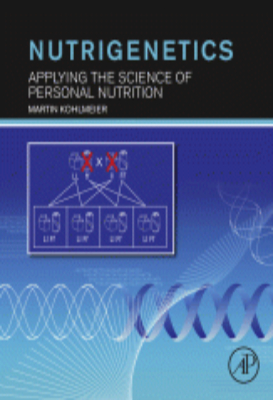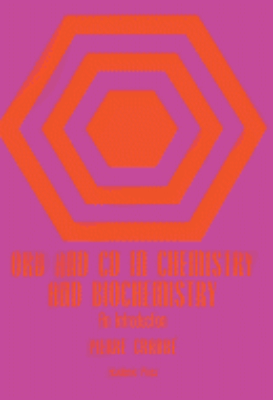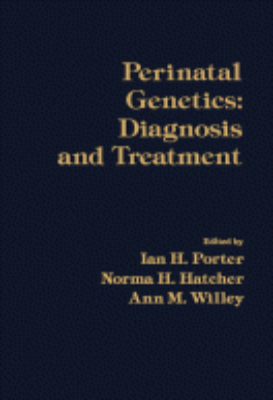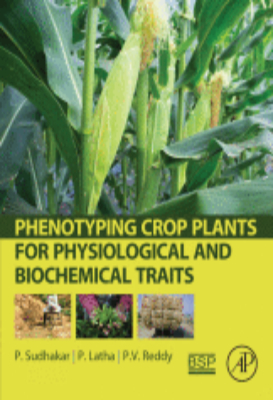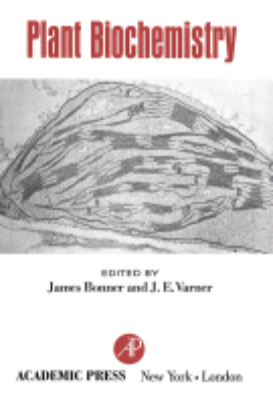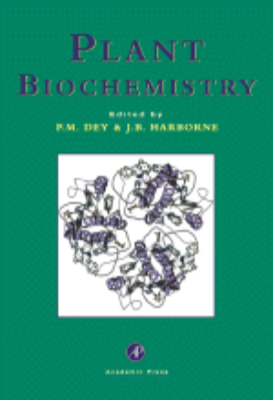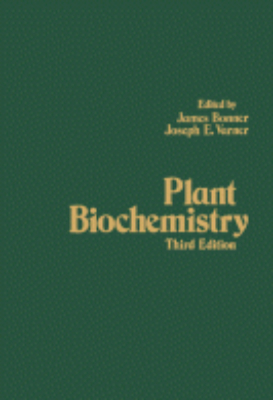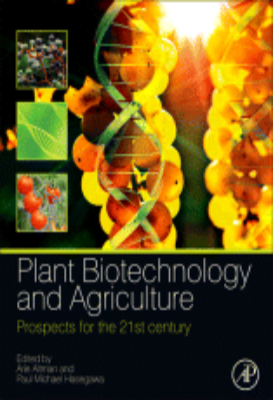Life Science
Newer Methods of Nutritional Biochemistry: Volume 2
Newer Methods of Nutritional Biochemistry: With Applications and Interpretations, Volume II provides information pertinent to nutritional biochemistry, including the development in enzyme concepts and methodology. This book discusses the mechanisms of several inborn errors of metabolisms and explains the methods by which these errors may be detected. Organized into 11 chapters, this volume starts with an overview of the advantages of body compositional data that are useful in evaluating treatment effects associated with physiological or nutritional experiments. This text then delineates the detection of aberrations in the metabolism of tryptophan, which may be induced by pathological stress. Other chapters consider the impact of hormones on the utilization of several nutrients. This book discusses as well the utilization of the essential nutrients, including amino acids, biotin, folic acid, pantothenic acid, and fat-soluble vitamins. The final chapter deals with principles and methods of nutritional needs in humans. Biochemists, graduate students, and investigators in the life sciences will find this book useful.
Newer Methods of Nutritional Biochemistry: Volume 3
Newer Methods of Nutritional Biochemistry: With Applications and Interpretations, Volume III presents the pressing problems in emergency feeding of populations in developing areas of the world with emphasis on the need for simple procedures to assess utilization of dietary proteins. This book reviews the criterion of protein utilization and considers the important components of protein metabolism. Organized into 11 chapters, this volume starts with an overview of the metabolic changes induced by deficiencies of essential nutrients. This text then examines the problems of human protein needs in the light of the food habits of vegetarians. Other chapters explore lipid metabolism in terms of its dynamic mechanisms. This book discusses as well the significance of minerals in the utilization of primary foodstuffs, namely, carbohydrates, proteins, and fats. The final chapter deals with the methodology for studies in human nutrition. This book is a valuable resource for biochemists, graduate students, and clinical researchers.
Newer Methods of Nutritional Biochemistry: Volume 5
Newer Methods of Nutritional Biochemistry: With Applications and Interpretations, Volume V, presents discussions and reviews of procedures that may have a significant impact on the future progress of the science of nutrition. Comprised of seven chapters, this book discusses the nutritional and metabolic aspects of circadian rhythms; the relationship of amino acid requirements in terms of amino acid composition and availability from various food sources; and the characteristics of protein-calorie malnutrition. It also describes methods, biochemical mechanisms, and dietary factors that influence the metabolic conversion of dietary carbohydrates into lipid moieties. The book examines the influence of nutritional factors on ribosomal dynamics and discusses the isolation, physical, and biochemical characteristics of proteinase inhibitors found in soy and lima beans and other edible vegetable seeds. A novel method for determining the biological value of protein foodstuffs is also included. This book will be a valuable resource for graduate students and investigators in nutrition and other life sciences.
Nuclear Magnetic Resonance in Biochemistry
Nuclear Magnetic Resonance in Biochemistry: Principles and Applications focuses on the principles and applications of nuclear magnetic resonance (NMR) in biochemistry. Topics covered include experimental methods in NMR; the mechanisms of NMR relaxation; chemical and paramagnetic shifts; spin-spin splitting; the use of NMR in investigations of biopolymers and biomolecular interactions; and molecular dynamics in biological and biochemical systems. This text is comprised of eight chapters; the first of which gives an overview of NMR spectroscopy and its use in studies of biological systems. The next two chapters discuss the theoretical basis for NMR applications in biochemistry, with emphasis on Bloch equations, quantum mechanics, correlation function and correlation time, double resonance, and chemical exchange. The reader is then introduced to the basis for chemical shifts and spin-spin splitting, along with several examples of the use of these NMR parameters in studies of small molecule interactions and structure. The experimental apparatus and procedures employed in NMR studies, Fourier transform NMR, and NMR spectral parameters of small molecules interacting with macromolecules are also considered. The book highlights the information obtainable from the spectra of biopolymers, and then concludes with a chapter on NMR investigations of the state of motion of lipids in membranes and model membranes; water in macromolecular and cellular systems; and sodium ion in biological tissue. This book is intended primarily for chemists, biochemists, biophysicists, and molecular biologists, as well as graduate students.
Nutrigenetics
Nutrigenetics: Applying the Science of Personal Nutrition provides a fully referenced, readable guide to understanding the rationale and importance of nutrigenetic applications and explains why single nutrition recommendations will not fit everybody or even a majority of modern humans. This books explains how genetic variation shapes individual nutrition requirements and sensitivities, presents questions to ask about reported gene-nutrient interactions, and what needs to be done before putting nutrigenetic tests to practical use. This book blends key concepts from the fields of genetics, biochemistry, epidemiology, public health, and clinical medicine to give a rich perspective on the genetically diverse nutritional needs and sensitivities of individuals in health and disease. A steadily increasing number of people order genetic tests to find out what they should eat for better health, well being and performance, and an even greater number asks their healthcare providers about such tests. Most of the currently offered tests are not grounded in current knowledge, often absurdly so, but few professionals can explain why they are misguided. On the other hand, there are more evidence-supported genetic variants that can guide nutrition decisions, but again most healthcare providers know little about them, much less use them in their daily practice. There is a great need for a solidly evidence-based yet accessible book that explains the science of nutrigenetics and provides the tools to evaluate new nutrigenetic tests.
Nutrition and Biochemistry of Milk/maintenance
Lactation: A Comprehensive Treatise, Volume III: Nutrition and Biochemistry of Milk/Maintenance focuses on the nutrition and biochemistry of milk and its constituents, including the nutritional aspects of milk as a food and nutritional maintenance of lactation in those species from which milk is utilized as a source of human food. This book is divided into two partsbiochemistry of milk and its nutritive quality and maintenance of lactation. In these parts, this volume specifically discusses the differences among species in milk composition; significance of polymorphism; pesticide residues in bovine milk; and transfer of radiostrontium into milk. The role of the mammary gland in the immune system; methodology of diagnosis of milk hypersensitivity; and metabolic defects in galactose metabolism are also elaborated. This text likewise covers the factors affecting nutritional requirements of lactating animals and shape of the lactation curve. This publication is useful to biologists, food technologists, and college students interested in lactation research.
Nutritional Biochemistry
"Nutritional Biochemistry takes a scientific approach to nutrition. It covers not just ""whats""--nutritional requirements--but why they are required for human health, by describing their function at the cellular and molecular level. Each case study either leads to a subsequent discovery or enables an understanding of the physiological mechanisms of action of various nutrition-related processes. The text is ""picture-oriented"" and the commentary is directed towards explaining graphs, figures, and tables. Nutritional Biochemistry includes a discussion of relevant aspects of physiology, food chemistry, toxicology, pediatrics, and public health. Experimental techniques for nutritional science are emphasized, and primary data is included to help give students a feel for the nutrition literature. This ""real-world"" approach provides students with a realistic view of the basis for much of our understanding of nutritional biochemistry. Key Features. Integrates biochemistry and nutrition in a case-oriented method. Emphasizes a hands-on approach to learning - case histories and clinical and research data illustrate all major points. Places emphasis on metabolism - metabolic pathways, enzymology, nutrient requirements (including RDA values). Reveals the benefits of the Mediterranean diet, the biochemistry of exercise, the cell signaling pathways, how nutrition can influence the development of cancer, and the anthropometry and genetics of obesity"
Opioid Peptides: Biology Chemistry and Genetics
The Peptides: Analysis, Synthesis, Biology, Volume 6: Opioid Peptides: Biology, Chemistry, and Genetics presents a biological topic of peptide research. This book is divided into nine chapters. Chapter 1 reviews the opioid peptide precursors and their genes. The proenkephalin and products of its processing are discussed in Chapter 2. In Chapter 3, the role of pro-opiomelanocortin (POMC) as a protein at the interface of the endocrine and nervous systems is examined. Chapter 4 provides a comprehensive account of the biology and chemistry of the dynorphin peptides. The opioid receptors are described in Chapter 5. Chapter 6 evaluates the structure-activity relationships of -endorphin, while Chapter 7 considers the conformational analysis of enkephalins and conformation-activity relationships. The structure-activity relationships among enkephalin peptides are elaborated in Chapter 8. The last chapter is devoted to the clinical significance of opioid peptides in humans. This publication is a good reference for biologists, specialists, and researchers concerned with peptides and proteins.
ORD and CD in Chemistry and Biochemistry
ORD and CD in Chemistry and Biochemistry: An Introduction essentially presents the necessary foreword and theoretical foundation for the useful application of optical rotatory dispersion (ORD) and circular dichroism (CD) to certain common chemical problems. This book emphasizes the precision of ORD and CD data in terms of stereochemical information. The book begins with some historical references and a concise review of basic principles on stereochemistry. It further delves onto the phenomena of optical activity. Also included are the definitions and units commonly used in ORD and CD. The book also discusses optical properties of polymers, organometallic, and inorganic derivatives; and some of the aspects of magnetic optical rotator dispersion (MORD) and magnetic circular dichroism (MCD). A table that presents wavelength range of the Cotton effects of most chromophoric groupings concludes the book. This monograph is a helpful reference to students as well as professionals from both chemistry and biochemistry fields of science.
Perinatal Genetics
Perinatal Genetics: Diagnosis and Treatment brings together the proceedings of the 15 Annual New York State Health Department Birth Defects Symposium held on September 30-October 1, 1984 in Albany, New York. The symposium provided a forum for clarifying and rationalizing certain aspects of diagnosis and treatment of perinatal genetic birth defects such as fragile X syndrome, phenylketonuria, and hypothyroidism. Comprised of 17 chapters, this book begins with an epidemiological review of very early pregnancy loss, focusing on fertilization and implantation; the probability of loss between fertilization and implantation (on about the sixth day), and between implantation and the 14th day (the first day of the expected next period in a non-pregnant woman); and the contribution of chromosomal errors in the sperm, ovum, and zygote to early reproductive loss. The reader is then introduced to cytogenetic abnormalities in spontaneous abortions of recognized conceptions; repetitive spontaneous abortion; and prenatal genetic diagnosis by chorionic villus sampling. Subsequent chapters explore prenatal treatment of biochemical disorders; in vitro fertilization and embryo transfer; and moral issues concerning third trimester pregnancy terminations. This monograph will appeal to perinatologists, neonatologists, obstetricians, pediatricians, and geneticists and should also serve as a useful guide for health professionals who provide care to pregnant women and their newborns.
Personalized Epigenetics
Personalized Epigenetics discusses the core translatability of epigenetics to health management of individuals who have unique variations in their epigenetic signatures that can guide both disorder and disease prevention and therapy. The book details inter-individual variability in the major epigenetic process in humans consisting of DNA methylation, histone modifications, and noncoding RNA, and the diagnostic, prognostic, and therapeutic potential of the field, it also reviews the impact of the environment on epigenetic variations among individuals and the role of pharmacology and drug development in personalized epigenetics. Most importantly, the text covers personalized epigenetics from a disease-oriented perspective, presenting chapters that provide advances in widespread disorders or diseases, including diabetes, cancer, autoimmune disorders, obesity, cardiovascular diseases, neurological disorders, and pain management.
Phenotyping Crop Plants for Physiological and Biochemical Traits
"Phenotyping Crop Plants for Physiological and Biochemical Traits presents a proven range of methodologies and practices for effective, efficient, and appropriate typing of crop plants. By addressing the basic principles and precautions needed when conducting crop-based experiments, this book guides the reader in selecting the appropriate method based on the growing environment, whether greenhouse, pot, field, or liquid (hydroponic). By addressing the quantification of seed traits related to growth experiments, including their viability and vigor, this book presents methodology options for optimum yield based on potential abiotic stresses.. Key Features. Discusses various methods that can contribute to phenotyping of crop plants for various physiological and biochemical traits. Presents reliable techniques for phenotyping or quantifying plant characters during varied climatic conditions. Provides insights for selecting appropriate methodologies for specific crop growing situations. Identifies the most appropriate protocols and methods for analyzing crop traits"
Pheromone Biochemistry
Pheromone Biochemistry covers chapters on Lepidoptera, ticks, flies, beetles, and even vertebrate olfactory biochemistry. The book discusses pheromone production and its regulation in female insects; as well as reception, perception, and degradation of pheromones by male insects. The text then describes the pheromone biosynthesis and its regulation and the reception and catabolism of pheromones. Researchers in the areas of chemistry, biochemistry, entomology, neurobiology, molecular biology, enzymology, morphology, behavior, and ecology will find the book useful.
Physiological Genetics
Physiological Genetics is a compilation of developments, contributed by experts in the field of physiological genetics. The articles contained in the book covers various accounts of developments in the field. The book starts with an introductory chapter describing genetic factors in developmental gene regulation, followed by discussions on enzyme differentiation, hormonal control of gene expression, biochemical genetics of morphogenesis, cytoplasmic male sterility in maize, plant somatic cell genetics, and the population dynamics of genetic polymorphism. Physiologists, biologists, geneticists, and students will find a valuable reference material.
Physiology and Biochemistry
The Structure and Function of Muscle, Second Edition, Volume III: Physiology and Biochemistry presents the physiology and biochemistry of muscle. This book discusses the various aspects of the structure of muscles and explores some aspects of muscle disease. Organized into 10 chapters, this edition begins with an overview of the transverse tubular system or T system of striated muscle. This text then examines the properties and function of membranes through electron microscopy. Other chapters consider in more detail from a biophysical viewpoint certain aspects of the series of events surrounding muscle contraction. This book discusses as well the significance of the central circulation and the amount of oxygen that can be delivered by the cardiovascular system. The final chapter deals with the heat output and chemical breakdown during an isometric twitch. This book is a valuable resource for scientists, neurobiologists, biologists, biochemists, physiologists, histologists, cytologists, and research workers.
Physiology of Woody Plants: 1979
Physiology of Woody Plants explains how physiological processes are involved in growth of woody plants and how they are affected by the environment, including the mechanisms of the processes themselves. Organized into 17 chapters, this book discusses the role of plant physiology, as well as the form and structure of woody plant. It also explores the nature and periodicity of shoot, cambial, root, and reproductive growth of trees of the temperate and tropical zones. Other topics elucidated are the process of photosynthesis and respiration, the various substances found in woody plants, plant nutrition, and factors affecting plant growth. This book will be valuable as a text to students and teachers and as a reference to investigators and others who desire a better understanding of how woody plants grow.
Physiology of Woody Plants: Second Edition 1997
This completely revised classic volume is an up-to-date synthesis of the intensive research devoted to woody plants. Intended primarily as a text for students and a reference for researchers, this interdisciplinary book should be useful to a broad range of scientists from agroforesters, agronomists, and arborists to plant pathologists, ecophysiologists, and soil scientists. Anyone interested in plant physiology will find this text invaluable.
Phytochemicals in Plant Cell Cultures
Cell Culture and Somatic Cell Genetics of Plants, Volume 5: Phytochemicals in Plant Cell Cultures provides comprehensive coverage of the wide variety of laboratory procedures used in plant cell culture, fundamental aspects of cell growth and nutrition, and plant regeneration and variability. This book consists of five main topicsphenylpropanoids, naphthoquinones, and anthraquinones; mevalonates; alkaloids; glucosinolates, polyacetylenes, and lipids; and biologically active compounds. This publication specifically discusses the coumarins in crown gall tumors, natural occurrence of bufadienolides, and accumulation of protoberberine alkaloids. The flavor production in tissue cultures of allium species and callus cultures derived from carrot root explants is also reviewed. This volume is valuable to experienced researchers and those newly entering the field of plant cell and tissue culture.
Plant and Bacterial Viruses
The Viruses: Biochemical, Biological, and Biophysical Properties, Volume 2: Plant and Bacterial Viruses deals with the biochemistry, biology, and biophysics of plant viruses. The viruses considered are tobacco and turnip yellow mosaic viruses; tobacco ringspot virus; potato virus X; and bacterial viruses, such as lysogenic bacteria and phages. This volume is organized into 10 chapters and begins with a discussion of the tobacco mosaic virus and other plant viruses, emphasizing the process of infection and synthesis and general features of the host-virus system. The next chapters focus on the purification and protein components of plant viruses; the chemical correlates of biological variability in viruses; and biological cycles of plant viruses in insect vectors. This book describes the bacteriophage, which is considered as a model virus in comparison with typical microorganisms and cellular organelles. It also introduces the reader to the kinetics of phage reproduction; the intracellular multiplication of bacterial viruses; and the process of lysogeny in bacteria. The book concludes with a chapter on irradiation of phage with ultraviolet light, decay of incorporated radiophosphorus (""suicide""), and ionizing radiation (usually X-rays). Biologists, botanists, biochemists, biophysicists, and microbial physiologists will find this book a rich source of information on plant and bacterial viruses.
Plant Biochemistry, 3rd ed.
"This fully revised translation of the world-renowned German edition covers the complete and modern knowledge of plant biochemistry. The book presents the topic in a concise and simplified manner so that students can digest the message and gain a basic knowledge of the entire field of plant biochemistry, from photosynthesis (the synthesis of natural plant products) to all kinds of genetic engineering with its many commercial applications. Topics include cell structure and function, lipid and polysaccharide metabolism, nitrogen fixation, phloem transport, synthesis and function of isoprenoids, phenylpropanoids and other secondary metabolites, plant growth regulation and development. Heldt provides a comprehensive description of photosynthesis, primary and secondary metabolism, the function of phytohormones and molecular engineering. The text covers research findings until the end of 2003 and identifies areas of future research. There are extensive references to the most recent scientific literature. Key Features. Illustrated with two-color diagrams and well designed metabolic schemes. Plant metabolism presented in the context of the structure and function of the plant. Many examples of commercial applications for the protection and quality improvement of harvest crops, plant breeding, and the production of raw materials for industrial use. Coverage of the latest research findings"
Plant Biochemistry: 1965
Plant Biochemistry focuses on the biological processes involved in plants, particularly noting metabolism, electron transport, biogenesis, and germination. The manuscript first offers information on the substructures and subfunctions of plant cell, including cell and subcell, enzymes, ribosomes, nucleus, cellular membranes, mitochondria and electron transport, chloroplast, and the substructure and function of the cell wall. The text then elaborates on basic metabolism. Enzymology, the path of carbon in respiratory metabolism, mono- and oligosaccharides, starch, insulin, and other reserve polysaccharides, and the biogenesis of the cell wall are discussed. The publication explains plant metabolism and control. Discussions focus on plant acids, alkaloid biogenesis, coumarins, phenylpropanes, and lignin, ethylene and polyacetylenes, steroids, and seed development and germination. The book is a valuable source of information for students or professional workers in the plant sciences.
Plant Biochemistry: 1997
"Plant Biochemistry provides students and researchers in plant sciences with a concise general account of plant biochemistry. The edited format allows recognized experts in plant biochemistry to contribute chapters on their special topics. Up-to-date surveys are divided into four sections: the cell, primary metabolism, special metabolism, and the plant and the environment. There is a strong emphasis on plant metabolism as well as enzymological, methodological, molecular, biological, functional, and regulatory aspects of plant biochemistry. Illustrations of metabolic pathways are used extensively, and further reading lists are also included. Key Features The coverage of the subject is divided into four sections. The plant cell-describing both molecular components and function. Primary metabolism-including the pathways of carbohydrate, lipid, nitrogen, nucleic acid and protein metabolism as well as gene regulation. Special metabolism-chapters on phenolics, isoprenoids and secondary nitrogen compounds. The plant and the environment-discussions of pathology, ecology and biotechnology at the molecular level"
Plant Biochemistry: Fourth Edition 2011
"The fully revised and expanded fourth edition of Plant Biochemistry presents the latest science on the molecular mechanisms of plant life. The book not only covers the basic principles of plant biology, such as photosynthesis, primary and secondary metabolism, the function of phytohormones, plant genetics, and plant biotechnology, but it also addresses the various commercial applications of plant biochemistry. Plant biochemistry is not only an important field of basic science explaining the molecular function of a plant, but is also an applied science that is in the position to contribute to the solution of agricultural and pharmaceutical problems. Plants are the source of important industrial raw material such as fat and starch but they are also the basis for the production of pharmaceutics. It is expected that in the future, gene technology will lead to the extensive use of plants as a means of producing sustainable raw material for industrial purposes. As such, the techniques and use of genetic engineering to improve crop plants and to provide sustainable raw materials for the chemical and pharmaceutical industries are described in this edition. The latest research findings have been included, and areas of future research are identified. Key Features. Offers the latest research findings in a concise and understandable manner. Presents plant metabolism in the context of the structure and the function of plants. Includes more than 300 two-color diagrams and metabolic schemes. Covers the various commercial applications of plant biochemistry. Provides extensive references to the recent scientific literature"
Plant Biochemistry: Third Edition 1976
Plant Biochemistry, Third Edition examines the fundamental aspects of plant biochemistry and biology, including taxonomy, morphology, ecology, horticulture, agronomy, and phytopathology. It discusses the substructures and subfunctions of plant cells, the basic metabolism of plants, and the mechanism and regulation as well as physiological significance of various pathways of photosynthetic carbon dioxide assimilation. Comprised of 26 chapters, this edition begins with an overview of the subcellular components of the plant cell, the overall logic or strategy that the cell uses, and the operation of individual subcellular systems. It discusses the plant ribosomes and nuclei, biosynthesis and assembly of cell membranes in plants, distribution and functional roles of microbodies in plants, photosynthesis and the general biology of chloroplasts, and plant microtubules. The remaining chapters focus on the biochemistry and functions of vacuoles, the primary cell wall and its biogenesis, the regulation of enzyme activity in metabolic pathways, the monosaccharides and oligosaccharides, and the lipid metabolism. The book concludes with a chapter on biological nitrogen fixation and its practical applications in agriculture. This book is a valuable resource for biochemists and plant biologists as well as advanced students or professional workers in plant sciences.
Plant Biotechnology and Agriculture
"As the oldest and largest human intervention in nature, the science of agriculture is one of the most intensely studied practices. From manipulation of plant gene structure to the use of plants for bioenergy, biotechnology interventions in plant and agricultural science have been rapidly developing over the past ten years with immense forward leaps on an annual basis. This book begins by laying the foundations for plant biotechnology by outlining the biological aspects including gene structure and expression, and the basic procedures in plant biotechnology of genomics, metabolomics, transcriptomics and proteomics. It then focuses on a discussion of the impacts of biotechnology on plant breeding technologies and germplasm sustainability. The role of biotechnology in the improvement of agricultural traits, production of industrial products and pharmaceuticals as well as biomaterials and biomass provide a historical perspective and a look to the future. Sections addressing intellectual property rights and sociological and food safety issues round out the holistic discussion of this important topic. Key Features. Includes specific emphasis on the inter-relationships between basic plant biotechnologies and applied agricultural applications, and the way they contribute to each other. Provides an updated review of the major plant biotechnology procedures and techniques, their impact on novel agricultural development and crop plant improvement. Takes a broad view of the topic with discussions of practices in many countries"





